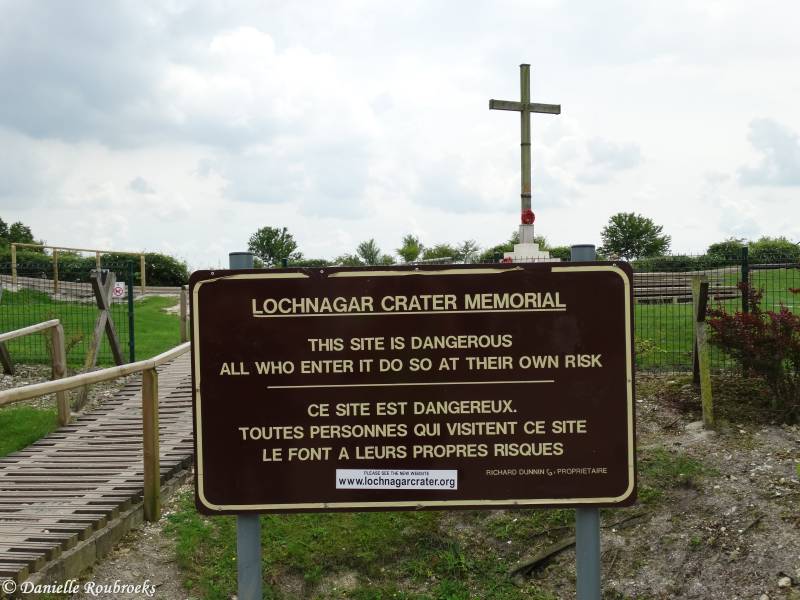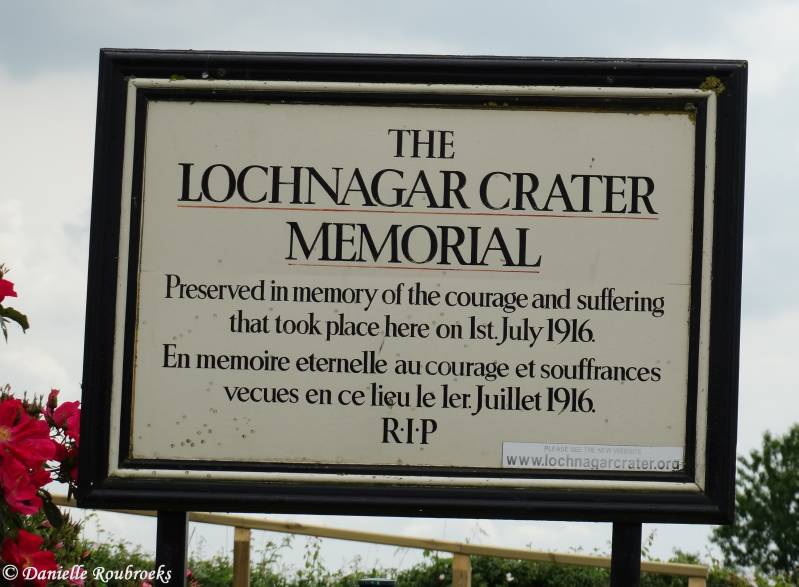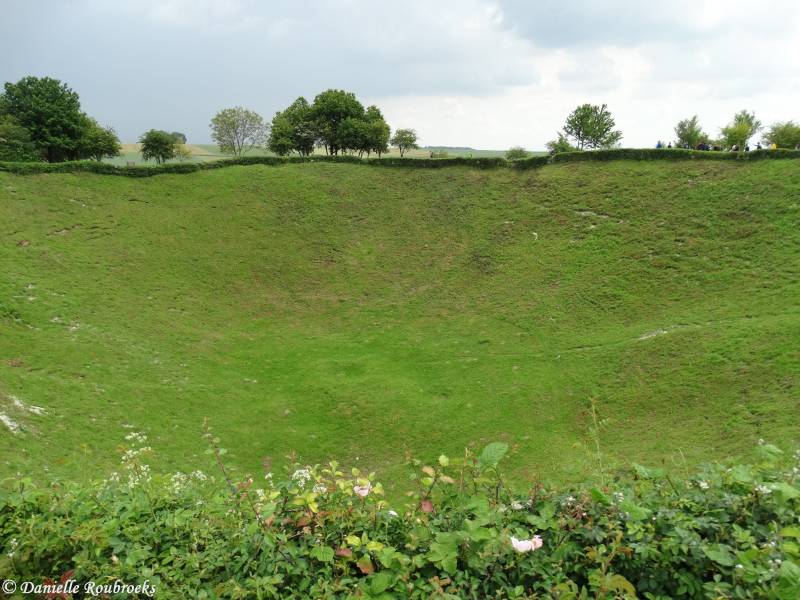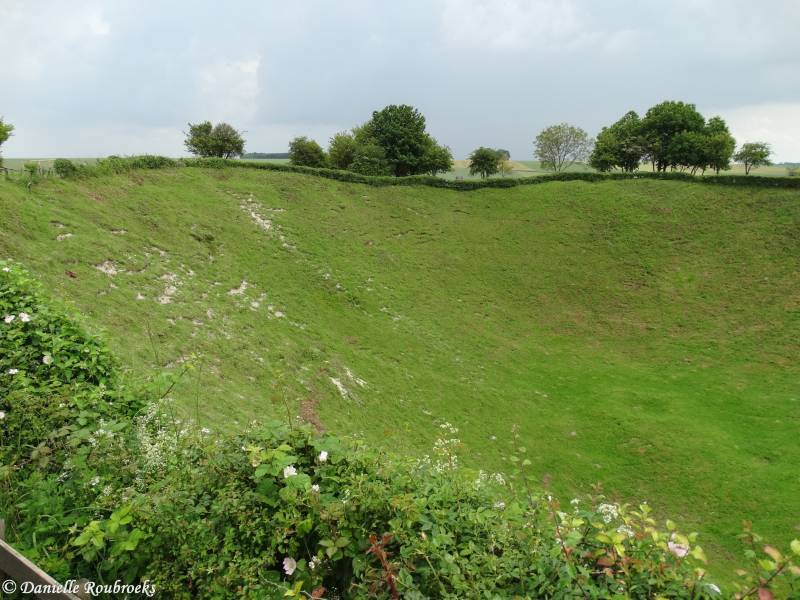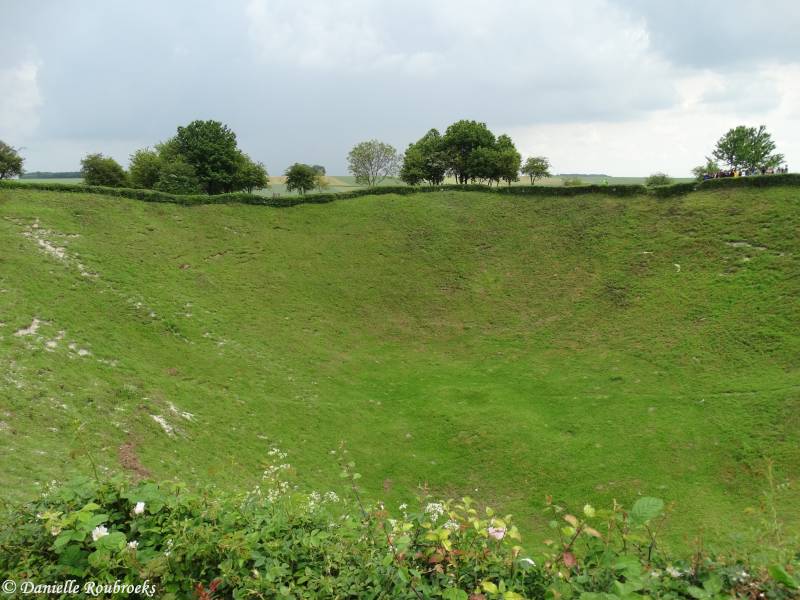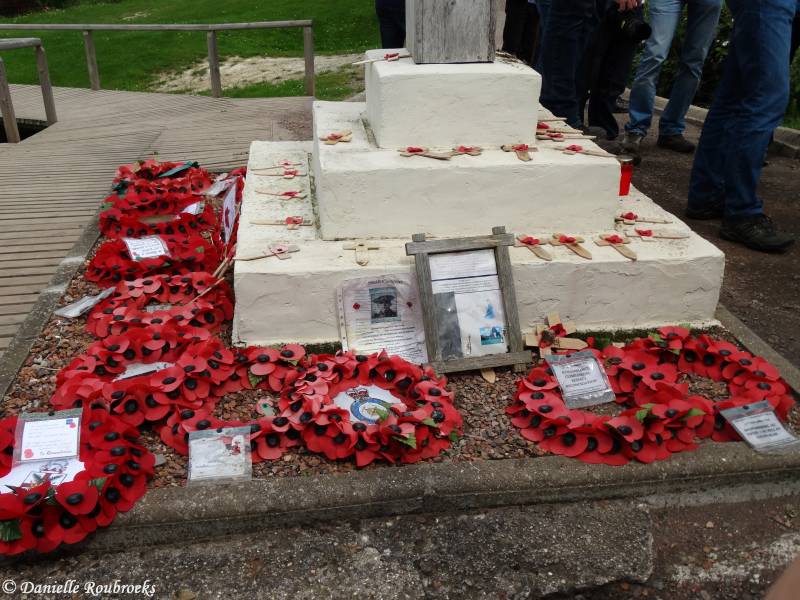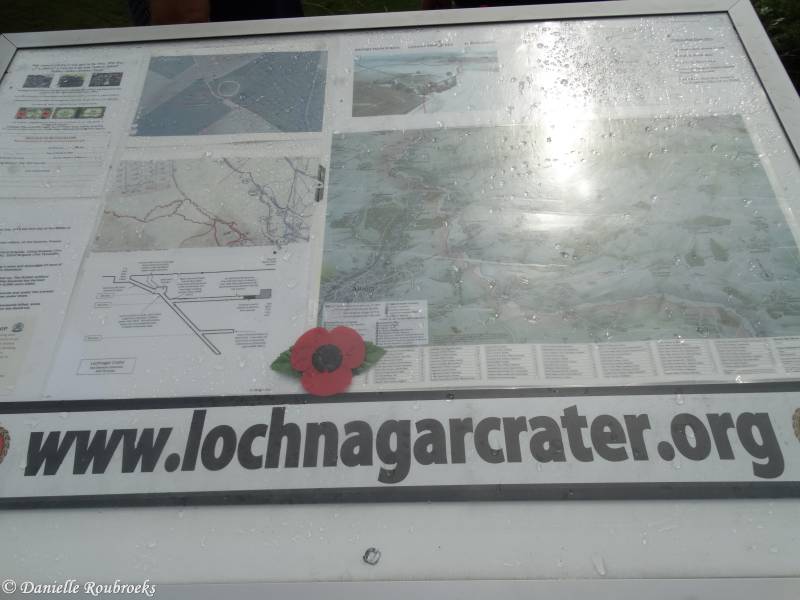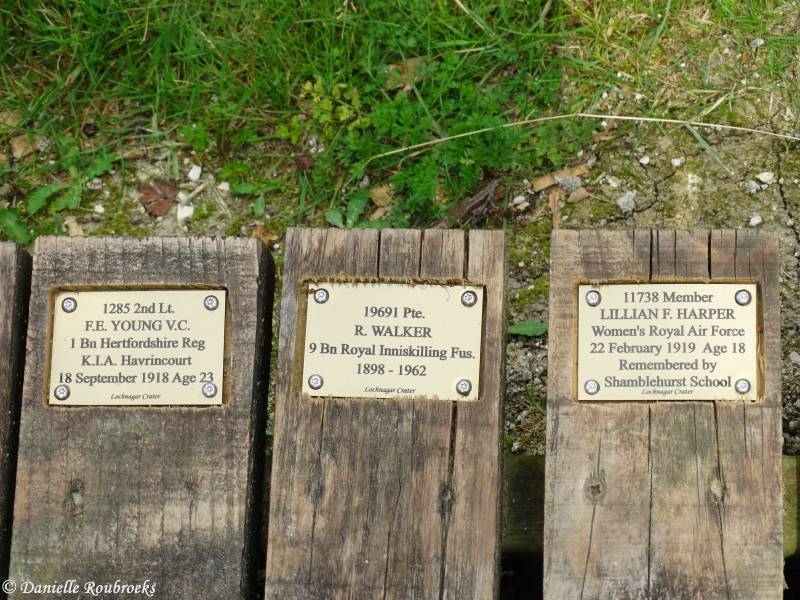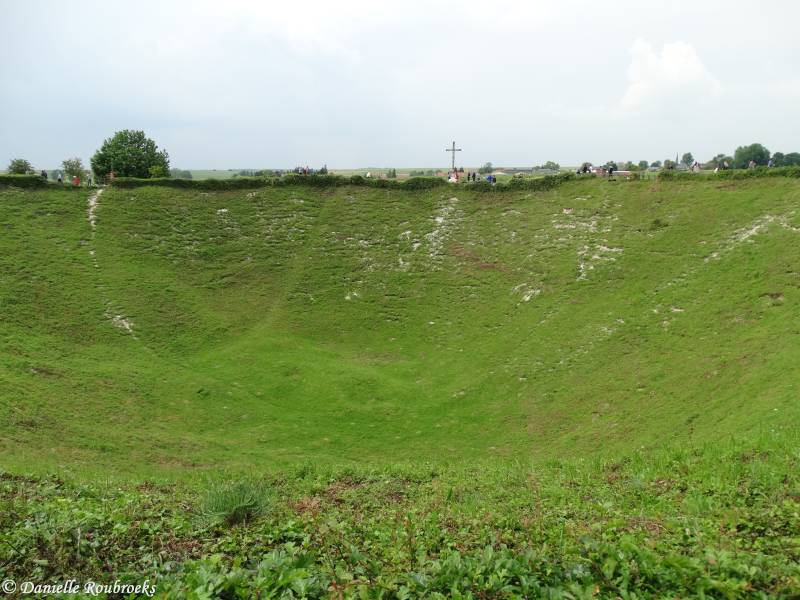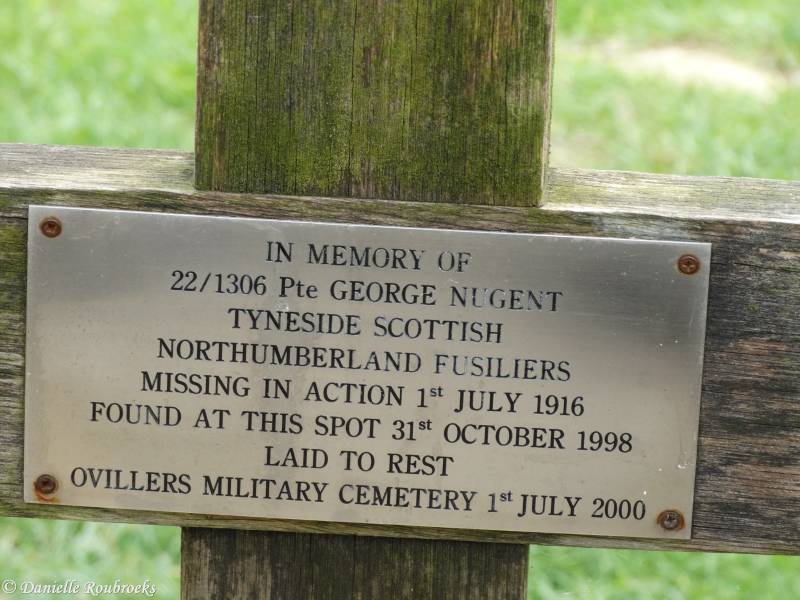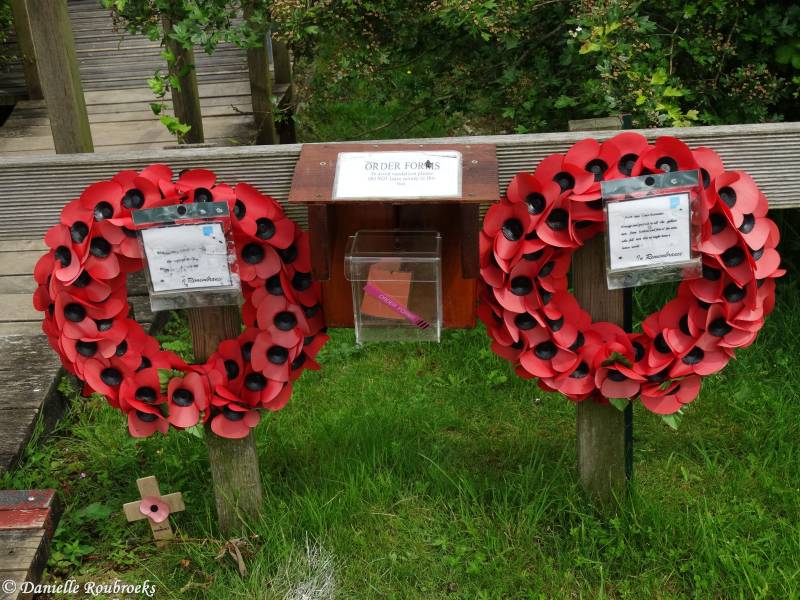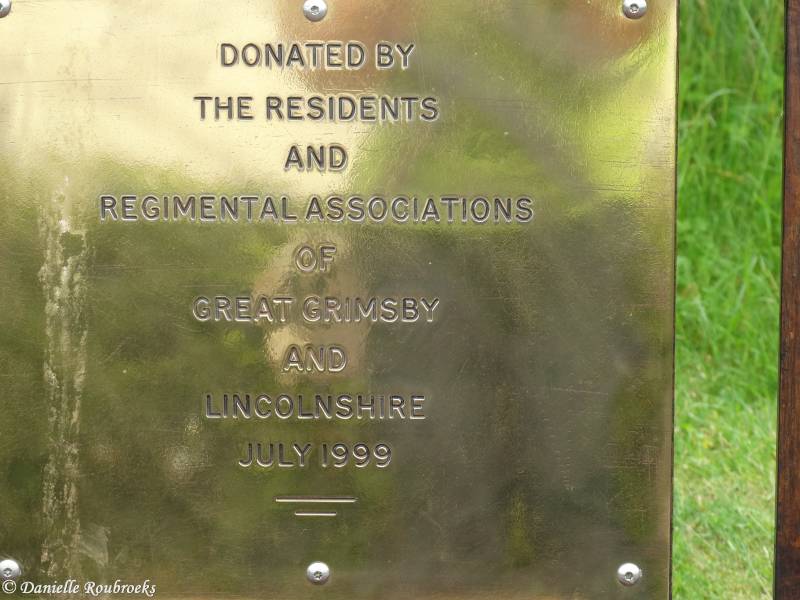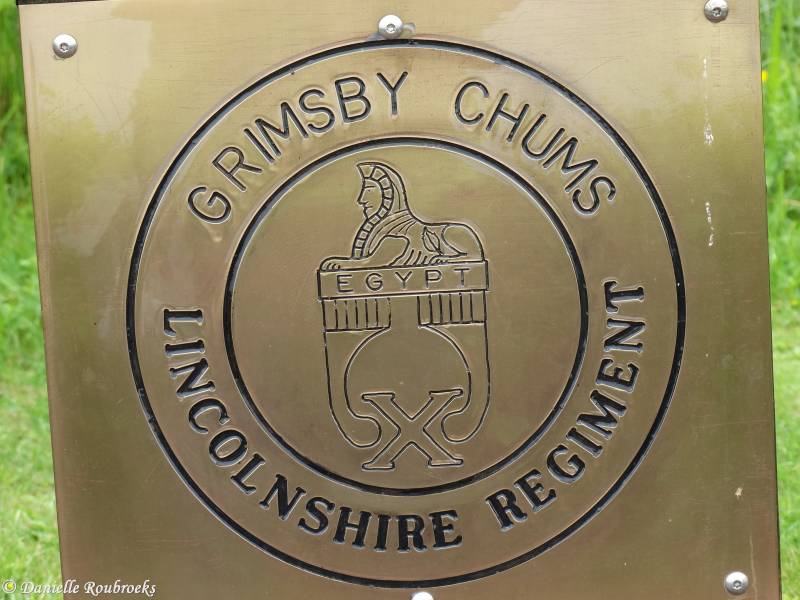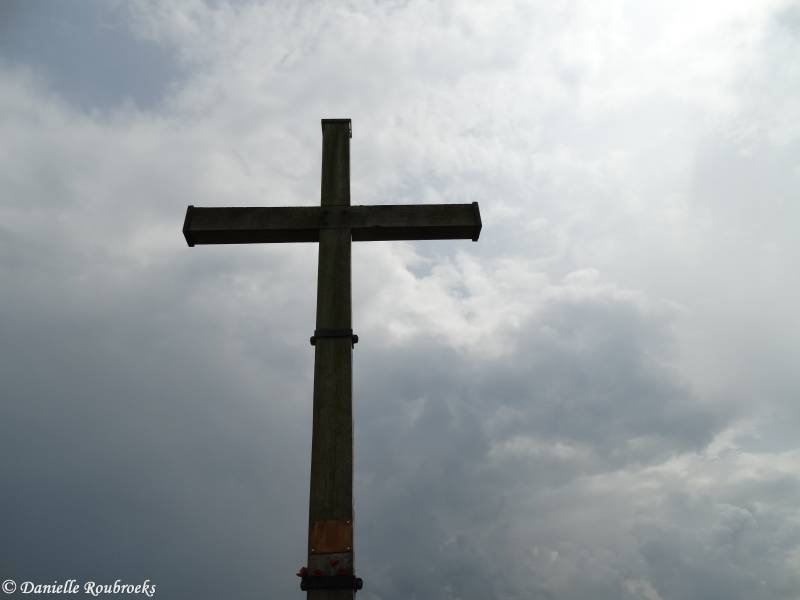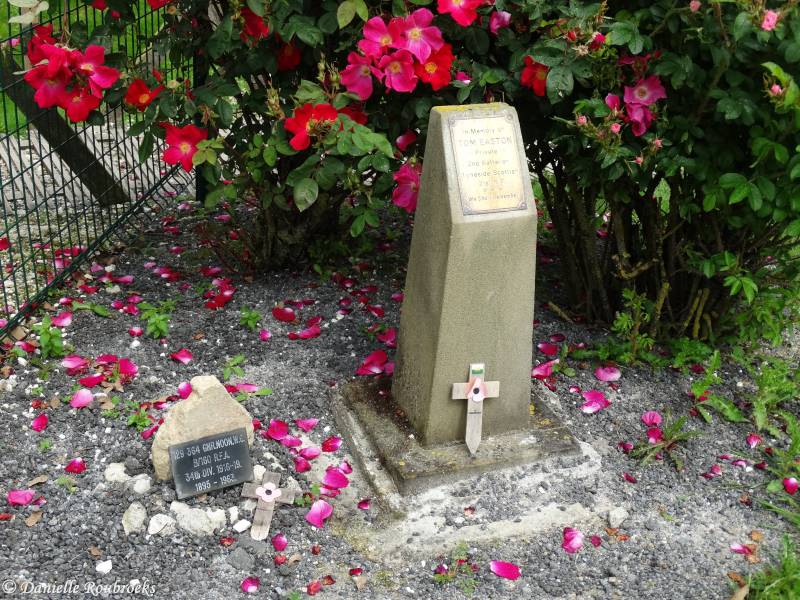Lochnagar Crater, La Boiselle
Historical Information (Wikipedia)
The Lochnagar mine south of the village of La Boisselle in the Somme département was an underground explosive charge, secretly planted by the British during the First World War, ready for 1 July 1916, the first day on the Somme. The mine was dug by the Tunnelling Companies of the Royal Engineers under a German field fortification known as Schwabenhöhe (Swabian Height).
The British named the mine after Lochnagar Street, the British trench from which the gallery was driven. The charge at Lochnagar was one of 19 mines that were placed beneath the German lines on the British section of the Somme front, to assist the infantry advance at the start of the battle.
The mine was sprung at 7:28 a.m. on 1 July 1916 and left a crater 98 ft (30 m) deep and 330 ft (100 m) wide, which was captured and held by British troops. The attack on either flank was defeated by German small-arms and artillery fire, except on the extreme right flank and just south of La Boisselle, north of the Lochnagar Crater. The crater has been preserved as a memorial and a religious service is held each 1 July.


